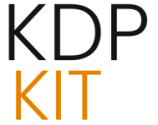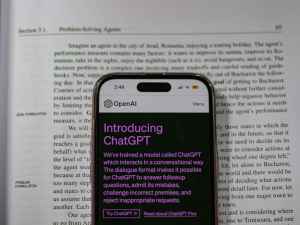
Phase Four: Production and Distribution Pathways—Selecting Your Vendors
With the manuscript perfected and the legal identifiers secured, the next monumental decision is how the finished product physically and digitally reaches the consumer. These choices directly impact your up-front cash outlay and your long-term profitability. Getting this wrong means either overpaying for inventory or missing entire segments of the market.
Print on Demand Versus Offset Printing: Financial Implications in Two Thousand Twenty-Five
For the vast majority of launching authors, Print-on-Demand (POD) remains the dominant, financially sound method. Services like IngramSpark and Amazon KDP print a book only *after* a customer places an order. This eliminates inventory risk and the crippling cost of storing thousands of unsold paperbacks.
The per-unit cost for a standard black-and-white paperback through these major POD services typically ranges between $2.00 and $6.00, depending heavily on page count, trim size, and ink color. This fee is simply deducted from your royalty when the sale is processed.
Offset Printing—the traditional bulk method—offers a much lower per-book cost but demands significant upfront capital. Minimum runs often start at 500 to 1,000 copies. In 2025, this method is generally reserved for authors with proven sales history, those needing specialized binding, or those who sell at events where they require hundreds of copies on hand.
Mastering Major Retail Channels: Amazon KDP, IngramSpark, and Beyond
Your distribution strategy in this modern period must be about maximizing reach while maintaining profitability. You cannot afford to ignore the behemoth, but you also cannot afford to rely on it exclusively. For most English-language authors, Amazon Kindle Direct Publishing (KDP) is the single most important point of sale, offering unparalleled access to the largest online marketplace and excellent terms for e-books and POD print.
However, relying solely on Amazon means forfeiting visibility in the wider world. This is where IngramSpark becomes essential. It provides superior access to the global bookstore and library distribution network—the channels that actually stock books on shelves outside the Amazon ecosystem.
The reality for true market saturation in 2025 is managing two primary print distributors: KDP for Amazon dominance and IngramSpark for wholesale/library reach. Yes, it adds logistical complexity, but the increased sales opportunity generally outweighs the administrative friction.
Distribution Channel Key Considerations (2025):. Find out more about estimated cost to self-publish a high quality book 2025.
The Ebook Ecosystem: Pricing Strategies Across Digital Platforms
Ebook pricing is a delicate calibration against market expectations. The general consensus for a standard novel remains between $3.99 and $7.99. This range typically unlocks the 70% royalty tier on Amazon KDP in major markets.
The strategic move for many authors is to play both sides:
Constant monitoring of competitor pricing and strategic use of promotional price drops are fundamental to driving visibility spikes during key sales periods.
The Financial Blueprint: Deconstructing the Estimated Costs for a 2025 Launch. Find out more about estimated cost to self-publish a high quality book 2025 guide.
The financial reality of self-publishing is that the cost is entirely variable, determined solely by your ambition for quality. While you could theoretically release a book for under $500 by heavily cutting corners, achieving a product that genuinely competes head-to-head with traditionally released titles demands a more substantial, non-negotiable budget. Think of this initial spend not as an expense, but as the *cost of market entry*.
Budgeting for Quality: A Tiered Cost Analysis of Production Services
A realistic assessment for a high-quality, competitive launch in Two Thousand Twenty-Five generally falls into clear budget tiers. Remember, these figures are for *creation* only, before any ongoing marketing spend:
Tier 1: The “Lean DIY” Route
Tier 2: The “Professional Standard” (Where Most Successful Indies Invest)
Tier 3: The Premium Package. Find out more about estimated cost to self-publish a high quality book 2025 tips.
If you are looking to understand the difference in quality between Tier 1 and Tier 2, a deep dive into building an author platform shows that a professional look yields exponentially better results in the early stages.
Analyzing the Production Overhead: Total Investment Scenarios
To cement the investment reality, let’s construct a common benchmark for a professionally produced, high-quality novel in 2025, *before* any advertising dollars are spent:
Sample Professional Standard Breakdown (70k Word Novel):
This calculation demonstrates that simply creating the *viable product file* that can compete on major retail sites requires a commitment near the $4,000 mark. This initial investment must be seen as the foundation—the non-negotiable cost of admission—upon which all future marketing efforts are built.
Phase Five: Igniting the Market—Launching and Sustaining Momentum
Having a flawless product is only half the battle; the other half is ensuring the right people know it exists and are persuaded to exchange their money for it. The market phase is not a single launch-day event; it is a continuous, ongoing commitment to visibility.
Prelaunch Buzz: Building an Author Platform for Immediate Impact. Find out more about estimated cost to self-publish a high quality book 2025 strategies.
The heavy lifting of marketing begins long before your book is available for purchase. Your central hub must be a dedicated author platform—a professional website that you own and control. This is where readers connect directly with you, the creator, bypassing ephemeral social media algorithms.
What is the single most valuable asset you can cultivate? Your email list. This is your private communication channel, immune to Facebook or Instagram algorithm shifts. It is a direct line to your most loyal readers.
The upfront cost for this foundation can vary. A professionally developed author website, including initial bespoke development, hosting, and first-year maintenance, can easily require an investment upwards of $1,000, though simpler, template-based setups can be achieved for significantly less.
The Paid Promotion Spectrum: Advertising Strategies That Yield Return
In the current landscape, relying solely on organic reach is a recipe for stagnation. Paid advertising is essential. The primary battlegrounds remain Amazon Ads (which target in-platform shoppers) and social media platforms like Facebook and Instagram (which target based on demographics and interests).
The investment here is highly flexible. For a launch week push, a prudent approach involves starting with small daily budgets—perhaps $50 to $100 per day—to aggressively test ad copy, imagery, and audience targeting. The goal in this initial phase is not massive profit, but data collection.
The key to scaling is rigorously analyzing performance metrics, chief among them the **ACOS (Advertising Cost of Sales)**. If your ACOS is consistently higher than your net royalty, you are losing money on every click, and the campaign must be paused or optimized. Mastering this metric ensures your promotional dollars generate a positive return on investment.
PostLaunch Longevity Strategies for Sustained Sales Velocity
True success is measured not by the first-week sales surge, but by the book’s ability to generate consistent, quiet income months and years down the line. This requires ongoing, smaller-scale marketing maintenance:
A consistent, modest presence keeps your book visible in the complex web of algorithms that drive discovery across all major retailers.
The Author’s Return: The Financial Realities of Royalties and Recoupment
The ultimate goal of this entire entrepreneurial exercise is not just publication, but financial viability. Understanding the income side of the equation is just as critical as mastering the expense side. You must know exactly how many units you need to move to start seeing a return on your initial investment.
Royalty Structures: A Comparison of Self-Publishing Versus Traditional Earnings
This is where the financial incentive of self-publishing shines brightest. While a traditionally published author might see royalties settle between $0.50 and $2.00 per unit sold, the self-published author, utilizing platforms like KDP at a standard pricing structure, generally earns between $1.00 and $5.00 per book sold. This variability is tied directly to the royalty tier (often 35% or 60%, which is tied to the retail price point). This higher margin inherently means fewer books need to be sold to achieve a sustainable income level, provided the initial production costs were managed responsibly.
For a complete financial breakdown, it is wise to study the specifics of the royalty structure deep dive to understand the 35% vs. 70% trade-offs on e-books.
Calculating Your Break-Even Point: Recouping the Initial Investment. Find out more about Professional book cover design cost self publishing definition guide.
Every author must perform this straightforward, unforgiving calculation:
(Total Production & Initial Marketing Expenses) / (Expected Per-Book Royalty) = Number of Units Required to Break Even
Let’s revisit our Professional Standard scenario. If your total upfront investment across editing, design, and initial targeted advertising clocked in at $5,000, and you earn a conservative average of $3.00 in net royalty per sale:
$5,000 / $3.00 Royalty = 1,667 Copies
You must successfully sell approximately 1,667 copies of your book just to get back to zero—the point where your creative *investment* is recouped. This metric should anchor all your sales goals for the first 12 to 18 months of your book’s life.
Long-Term Author Income Streams: Beyond Initial Sales Volume
True financial success in the Two Thousand Twenty-Five publishing environment rarely comes from a single book’s launch surge. It stems from creating a durable backlist and strategically leveraging your current book into adjacent revenue streams. This transforms the book from a product into a lead generator.
These secondary streams include:
When a book acts as the primary lead-generation tool for a much broader, more lucrative author platform—be it through speaking fees or course sales—the initial creative investment continues to pay dividends for years to come, long after the initial sales count has leveled off.
Conclusion: Actionable Takeaways for Your 2025 Launch
The modern publishing landscape demands that you marry artistic vision with business precision. You have moved past “Phase One: Writing the Manuscript.” Now, your focus must be operational excellence in the subsequent phases.
Key Actionable Insights for Right Now:
The market in 2025 is more crowded, but it is also more accessible to the author who respects the business of publishing. Are you ready to deploy a visually compelling, legally sound, and digitally optimized product? The next step is putting these systems into motion. What is the one area—design, legal, or distribution—that you feel needs your immediate, focused investment?







